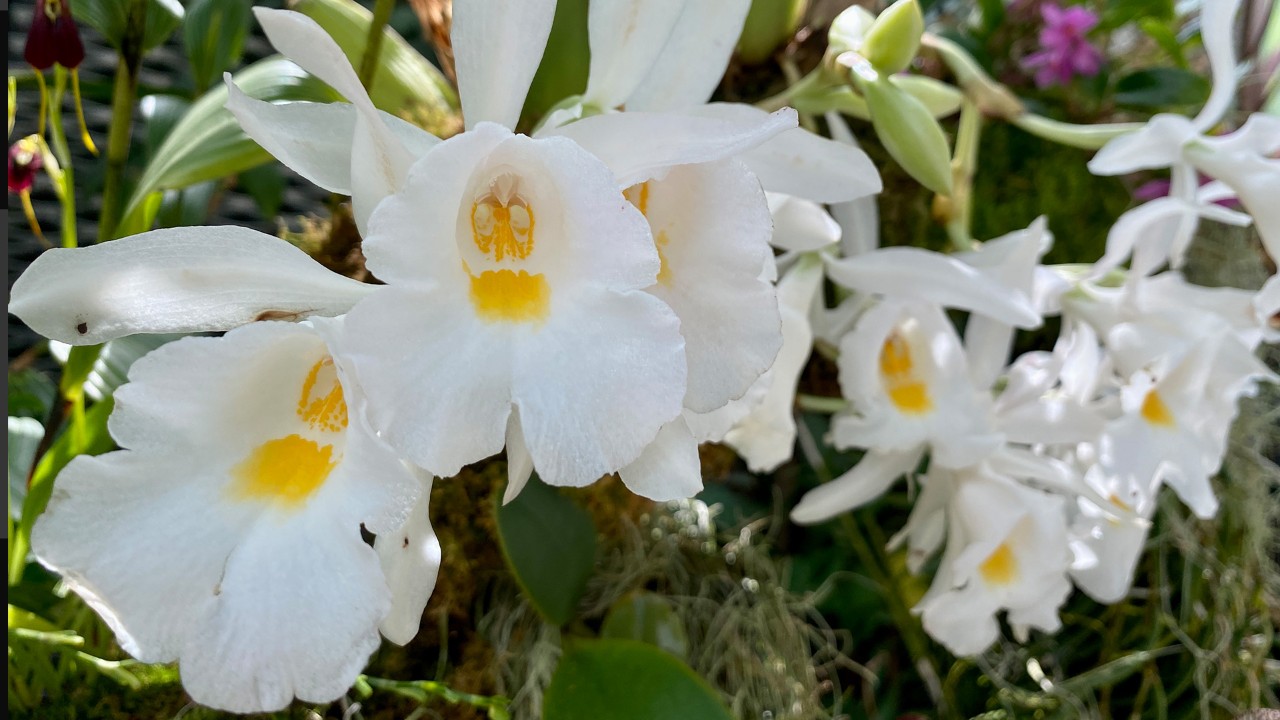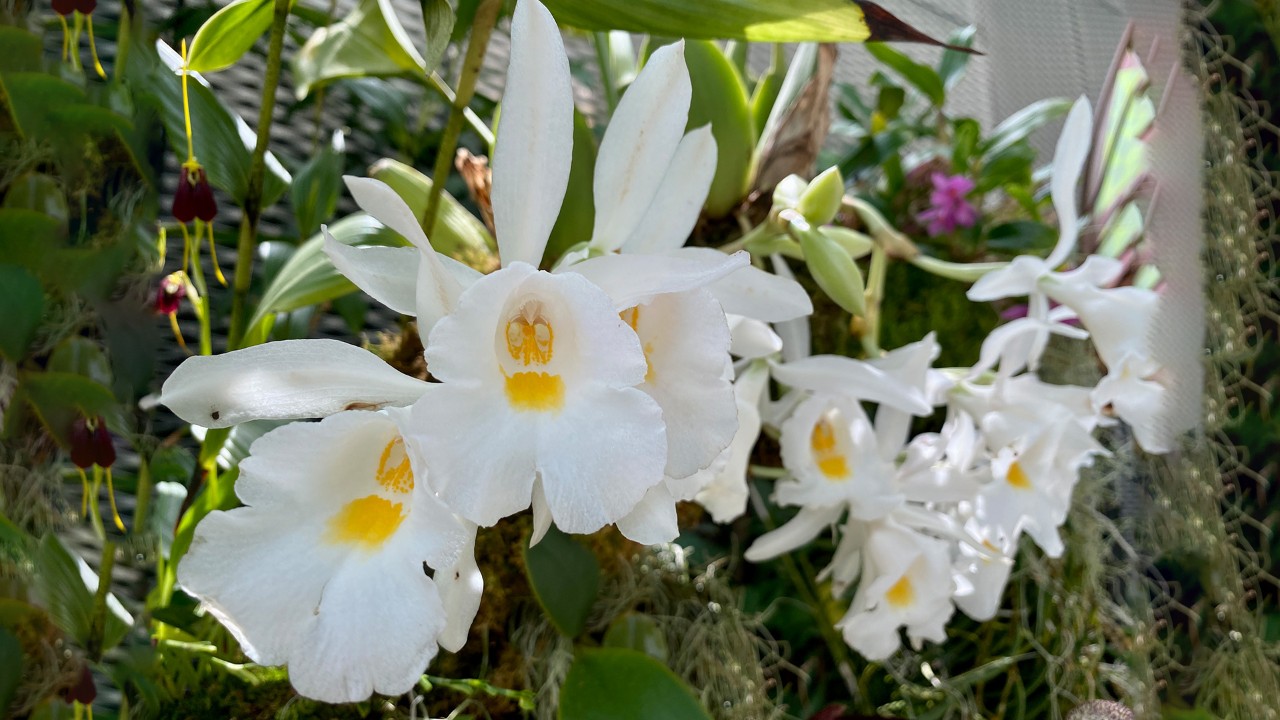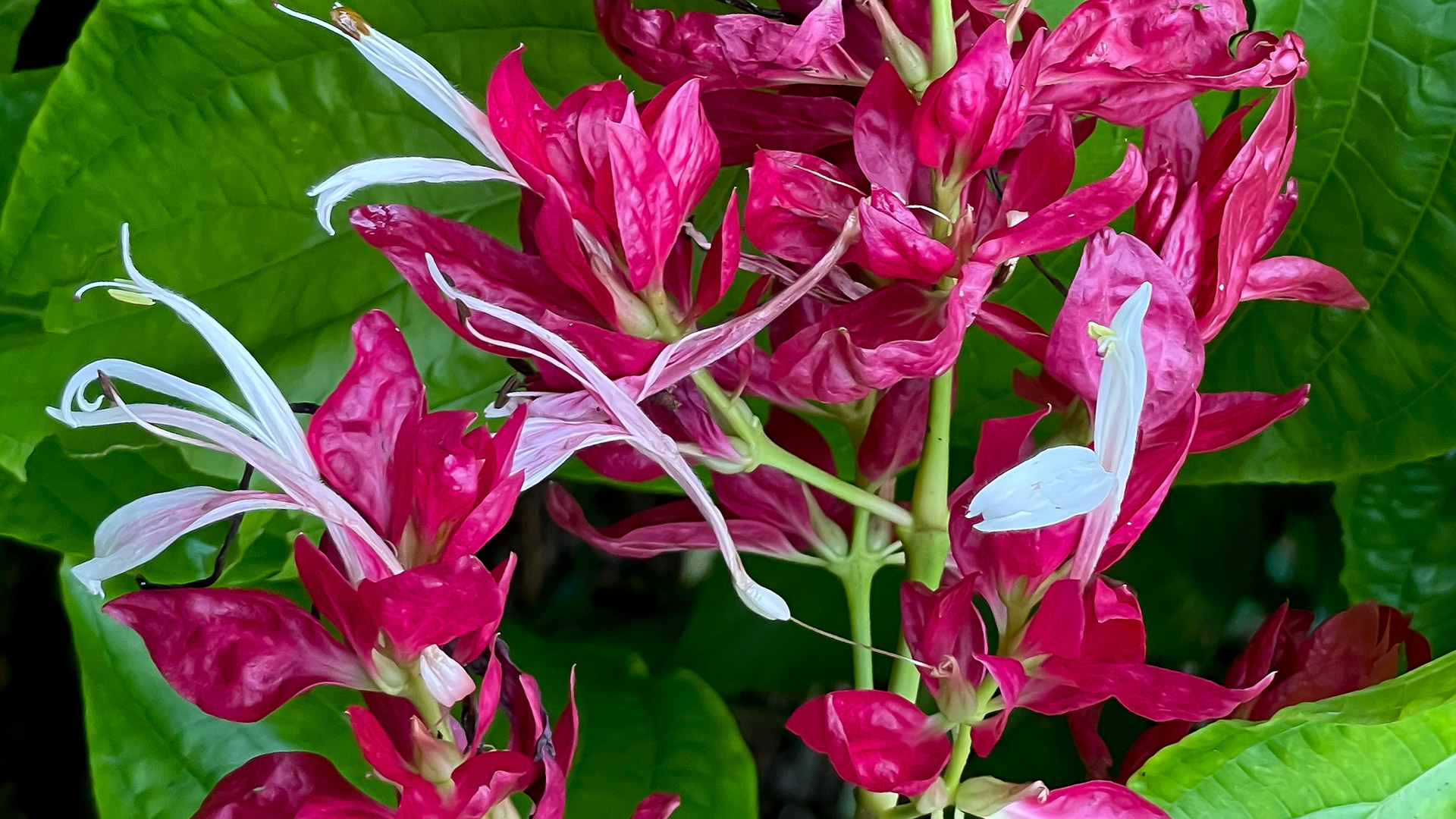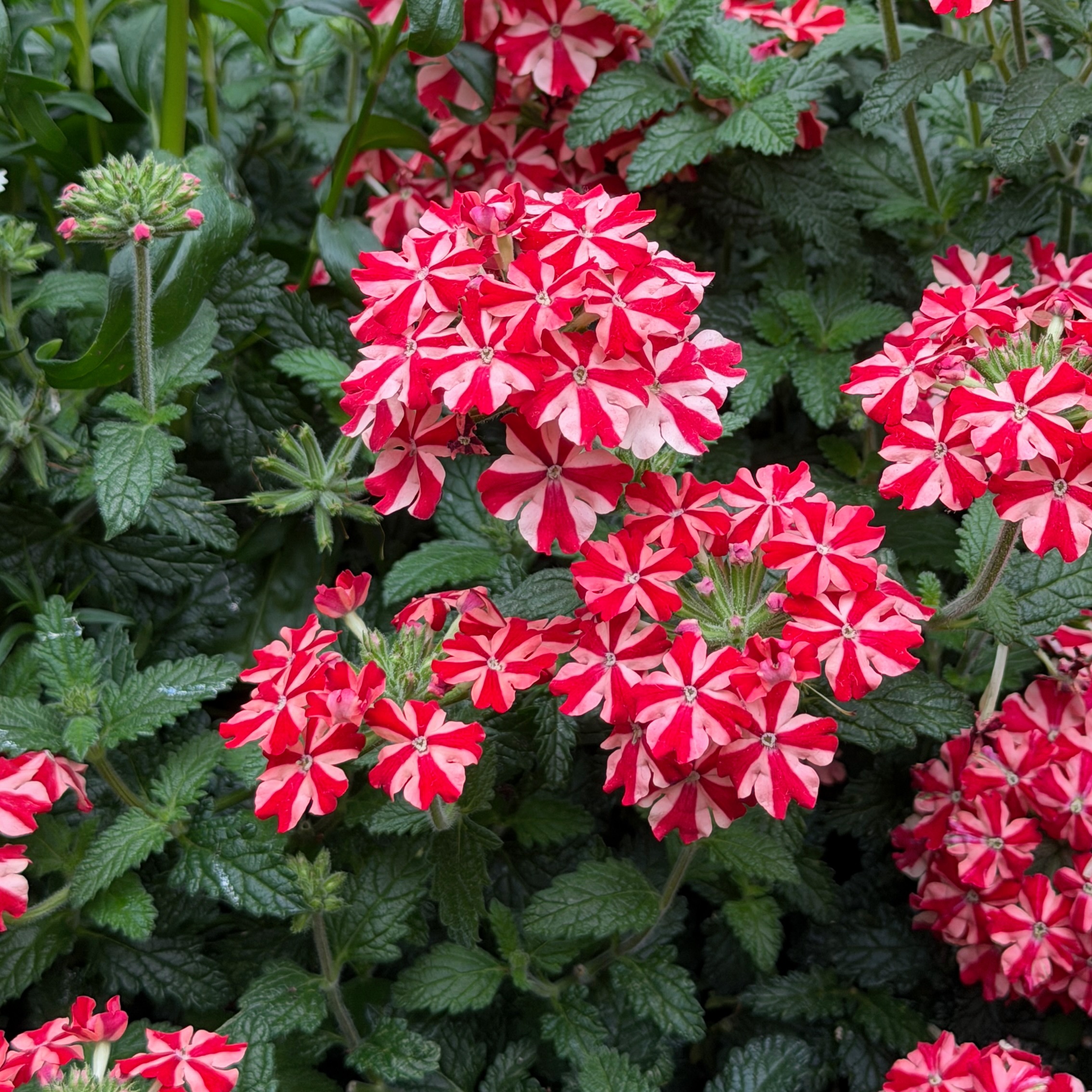Hennis' Trichopilia
(Trichopilia hennisiana)
 Flowers of Trichopilia hennisiana showing its unusually large size.
Flowers of Trichopilia hennisiana showing its unusually large size.
It is rather surprising to find a non-typical member of the Oncidiinae group sporting few but spectacularly large blooms, so different from the long, delicate racemes of dozens of small flowers typical of the Oncidium alliance. As one of the genera of high-altitude epiphytic (occasionally lithophytic or terrestrial) Oncidium alliance of the New World Tropics, Trichopilia orchids consist of 45 species. They are mostly found in seasonally wet, low to mid-elevation montane forests from 100 to 2500m above sea level, occurring from Cuba to Puerto Rico, Trinidad, Mexico to Bolivia, the Guianas, Venezuela and Brazil.
 Flowers and spikes emerging from the base of their pseudobulbs.
Flowers and spikes emerging from the base of their pseudobulbs.
This particular species, Trichopilia hennisiana, is native to Colombia and Ecuador. It is reported that the species grows at high elevations: 1800-2500m in Colombia and around 1400m in Ecuador.
Flowers of Trichopilia hennisiana are large (2-3 times larger!) when compared to the typical dancing lady orchids or oncidiums, each measuring about 9cm wide and 12cm in height, lasting about 2 weeks. Most of us visualize oncidiums and their allies as possessing long, tall multi-floral spikes of small flowers; however, this Trichopilia species features short, basal inflorescences with just a few, large flowers that arch gracefully in tidy clusters, making an attractive, compact floral display.
Their fragrant flowers have cattleya-like tubular flared lips which are usually a characteristic of bee-or-wasp-pollinated orchids. Such orchids feature a chamber-like structure, often formed from the lip and column, to serve as an advertisement to their pollinators.
The genus name, Trichopilia, comes from the Greek for hair (trichos) and felt (pilos) refers to the fringe margin of the area in which anther is situated on the column in orchid flowers (clinandrium) in the type species. The species is named in honour of Wilhelm Hennis, 19th century German collector in South America and gardener in Hildersheim, Germany.
Written by: Ziana Yacob, Senior Manager (Research and Horticulture)
Ziana's fascination with the many wonders of plants led her to study Horticulture. She has been involved in propagating and nurturing in-house plant collections, with a special focus on orchids. Keeping plants thriving is both a rewarding challenge and a continuous journey of learning for her!



